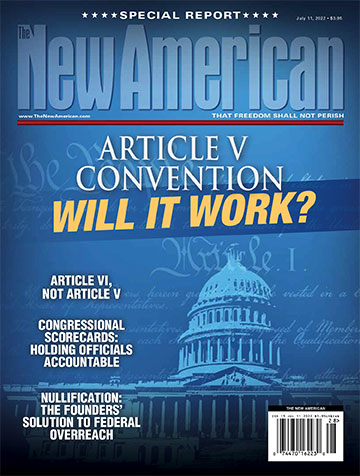Balanced Budget Amendment
For a few decades, America’s national debt and annual deficit spending have captured public and political attention. Calls for a Balanced Budget Amendment (BBA) to somehow rein in out-of-control government spending and the massive deficits and debts that accompany it have issued periodically from both political parties. Amending the Constitution to compel venal politicians to exert fiscal discipline sounds viscerally appealing, but would it actually solve the problem? And how do today’s multitrillion-dollar debts and deficits compare with historical levels of federal government spending and indebtedness?
The Debt Crisis
On January 8, 1835, a unique and wonderful event transpired in American history. On that forgotten date, President Andrew Jackson paid off the entire U.S. national debt, putting the federal government in the black for the first and only time in its entire history. This blessed interlude of solvency was remarkably short-lived; by January of the following year, the national debt had reappeared, in the now-negligible amount of $37,000. Aside from that single American annus mirabilis, the national debt has been a permanent fixture of American politics. America began her existence as an independent nation deep in debt from the economic ravages of the Revolutionary War, and subsequent conflicts, from the War of 1812 onward, have added to the tally. At several points in American history, the debt as a percentage of gross domestic product (or GDP, a figure more or less equivalent to the national income) has reached dangerous levels, including the Civil War and World War II. In 1946, the national debt-to-GDP ratio hit a new record level at 119 percent. But by the following year, as the postwar boom gained steam, the debt to GDP was already trending downward, at a still worrisome but much-improved 103 percent. Ten years later, in 1957 (a recessionary year), the debt to GDP had declined, aptly enough, to 57 percent, and by the end of the 1960s, it was down in the vicinity of 35 percent. Until well into the 1980s, the debt-to-GDP ratio remained under 40 percent, although the illusionary effects of inflation caused the actual dollar amount of the debt to soar.
But in 1985, the debt-to-GDP ratio edged above 40 percent for the first time in decades, beginning a more or less accelerating rise that has continued into the 2020s. Only three years after passing 40 percent, the debt-to-GDP ratio surpassed 50 percent, and just four years after that — in 1992 — it breached 60 percent. Through the rest of the ’90s and early 2000s, the ratio hovered between the mid-50 and low-60-percent level, before exploding into the stratosphere with the onset of the Great Recession. In 2009 it jumped to 82 percent, and by 2012 had reached 99 percent. In 2014 it breached 100 percent for the first time since 1947, and by 2019 it sat at 107 percent. Then came the Covid pandemic, the ensuing economic contraction, and the massive federal stimulus programs. Result: The debt-to-GDP ratio jumped to 129 percent in 2020, a new all-time high in American history. It eased off slightly in 2021, but remained in record territory, at 124 percent.
JBS Member or ShopJBS.org Customer?
Sign in with your ShopJBS.org account username and password or use that login to subscribe.

 Subscribe Now
Subscribe Now
- 24 Issues Per Year
- Digital Edition Access
- Exclusive Subscriber Content
- Audio provided for all articles
- Unlimited access to past issues
- Cancel anytime.
- Renews automatically

 Subscribe Now
Subscribe Now
- 24 Issues Per Year
- Print edition delivery (USA)
*Available Outside USA - Digital Edition Access
- Exclusive Subscriber Content
- Audio provided for all articles
- Unlimited access to past issues
- Cancel anytime.
- Renews automatically


